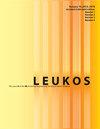原色匹配对观察者匹配的影响:第一部分-准确性
IF 2.6
2区 工程技术
Q2 CONSTRUCTION & BUILDING TECHNOLOGY
引用次数: 8
摘要
良好的色彩描述始于准确的颜色匹配函数(CMFs)或锥体基础(CF)的可用性。最近的研究表明,视觉元测量与使用标准CIE CMF或其他CMF集计算的元测量之间存在差异,特别是对于窄带源。在当前的研究中,54名观察者(年龄、性别、种族和眼睛颜色不同)在沉浸式感知中性(4673 K)观看条件下,使用8种不同的窄带原色,在10°刺激下进行了一系列消色差色彩匹配实验。参考刺激由一个70 cd/m2的灰色(4613 K)卡提供,该卡由光谱宽带光源照射。结果证实,实验和计算之间存在实质性和显著的差异,特别是当包括短波长(404 nm)时,特别是对于CIE 1931 2°CMFs。研究发现,峰波长为636 nm、521 nm和447 nm的原色集与工业上广泛使用的典型RGB原色集接近,在所有CMF集中具有最稳定的匹配性能。最后,除了主要波长和CMF集的影响外,年龄、性别、种族和眼睛颜色的潜在影响也进行了研究。年龄对颜色匹配的影响被发现是显著的,这是由于年轻和年老的观察者对蓝色原色的光谱敏感度不同;观察者的性别、种族和眼睛颜色对颜色匹配准确性的影响不显著。本文章由计算机程序翻译,如有差异,请以英文原文为准。
Impact of Color-Matching Primaries on Observer Matching: Part I – Accuracy
ABSTRACT A good color description starts with the availability of accurate color-matching functions (CMFs) or cone fundamentals (CF). Recent work indicates a discrepancy between visual metamers and those calculated using the standard CIE CMFs or other CMF sets, especially for narrowband sources. In the current study, 54 observers (varying in age, gender, ethnicity, and eye color) performed a series of achromatic color-matching experiments with a 10° stimulus using eight different narrowband primaries under an immersive, perceptually neutral (4673 K) viewing conditions. The reference stimulus was provided by a 70 cd/m2 gray (4613 K) card illuminated by a spectrally broadband light source. The results confirm that substantial and significant differences between experimental and calculated metamers exist, particularly when a short wavelength primary (404 nm) is included and especially for the CIE 1931 2° CMFs. It is found that the primary set characterized by the peak wavelengths 636 nm, 521 nm, and 447 nm, which are close to those of typical RGB primaries widely used in industry, results in the most stable matching performance across all CMF sets. Finally, in addition to the impact of primary wavelength and CMF set, the potential effect of age, gender, ethnicity, and eye color has also been investigated. The effect of age on the color matches is found to be significant and is due to differences in spectral sensitivity of young and old observers with respect to the blue primary; the impact of observer gender, ethnicity, and eye color, on color-matching accuracy is not significant.
求助全文
通过发布文献求助,成功后即可免费获取论文全文。
去求助
来源期刊

Leukos
工程技术-光学
CiteScore
7.60
自引率
5.60%
发文量
19
审稿时长
>12 weeks
期刊介绍:
The Illuminating Engineering Society of North America and our publisher Taylor & Francis make every effort to ensure the accuracy of all the information (the "Content") contained in our publications. However, The Illuminating Engineering Society of North America and our publisher Taylor & Francis, our agents, and our licensors make no representations or warranties whatsoever as to the accuracy, completeness, or suitability for any purpose of the Content. Any opinions and views expressed in this publication are the opinions and views of the authors, and are not the views of or endorsed by The Illuminating Engineering Society of North America and our publisher Taylor & Francis. The accuracy of the Content should not be relied upon and should be independently verified with primary sources of information. The Illuminating Engineering Society of North America and our publisher Taylor & Francis shall not be liable for any losses, actions, claims, proceedings, demands, costs, expenses, damages, and other liabilities whatsoever or howsoever caused arising directly or indirectly in connection with, in relation to, or arising out of the use of the Content. Terms & Conditions of access and use can be found at http://www.tandfonline.com/page/terms-and-conditions .
 求助内容:
求助内容: 应助结果提醒方式:
应助结果提醒方式:


